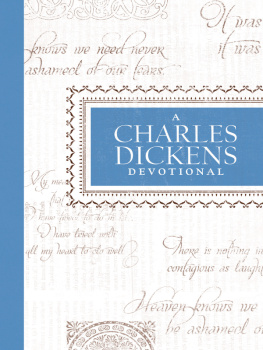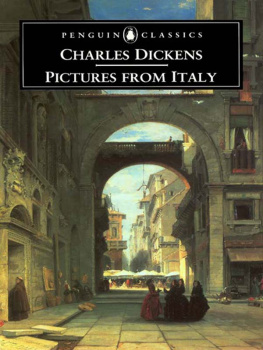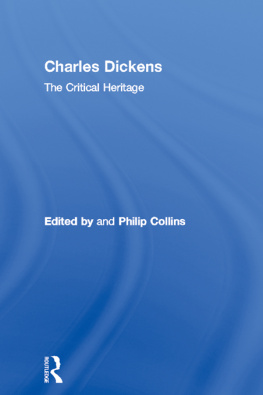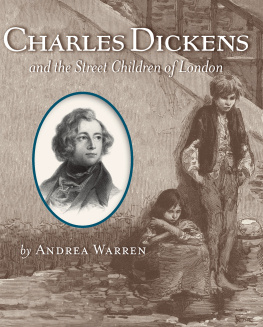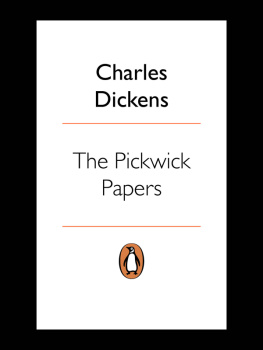TRANSCRIBERS NOTE
The .
The numbers in the right margin refer the page numbers of the original printed book, they appear just where the corresponding page begins, e.g., the original contains the text between the labels p. 113 and p. 114 in this version.
Changes to the original publication (possible typographic errors or inconsistencies) have been marked with a dotted underline, and the printed text usually appears in a pop-up box when hovering the cursor on it.
In Jail with Charles Dickens.
i
IN JAIL WITH
Charles Dickens
BY
ALFRED TRUMBLE
EDITOR OF THE COLLECTOR
Illustrated
London
SUCKLING & GALLOWAY
1896
ii
Copyright, 1896,
By
FRANCIS P. HARPER.
Printed in America.
frontispiece iii
INTRODUCTORY.
R eaders of Charles Dickens must all have remarked the deep and abiding interest he took in that grim accessory to civilization, the prison. He not only went jail hunting whenever opportunity offered, but made a profound study of the rules, practices and abuses of these institutions. Penology was, in fact, one of his hobbies, and some of the most powerful passages in his books are those which have their scene of action laid within the shadow of the gaol. It was this fact which led to the compilation of the papers comprised in the present volume.
The writer had been a student of Dickens from the days when the publication of his novels in serial form was a periodical event. When he first visited England, many of the landmarks which the novelist had, in a manner, made historical, were still in existence, but of the principal prisons which figure in his works Newgate was the only one which existed in iv any approximation to its integrity. The Fleet and the Kings Bench were entirely swept away; of the Marshalsea only a few buildings remained, converted to ordinary uses. In this country, however, the two jails which interested him, still remain, with certain changes that do not impair their general conformance to his descriptions.
These papers, therefore, consist of personal knowledge, as a voluntary visitor, be it understood, of Newgate. The Tombs in New York, and the Eastern District Penitentiary in Philadelphia, supplemented by references to the records. For the Fleet, Marshalsea, and Kings Bench, the writer is indebted to the chronicles and descriptions of Peter Cunningham, John Timbs, Leigh Hunt, and other ingenious and interesting historians of the London of the early Victorian era. In connection with the paper relating to the Eastern District Penitentiary of Philadelphia, his thanks are due for the assistance and information rendered by Mr. Michael J. Cassidy, the Warden.
ALFRED TRUMBLE.
New York, March 1896.
v
CHAPTER I.
NEWGATE WITHOUT.
N ewgate was the first prison to which Charles Dickens gave any literary attention. An account of a visit to it appears among the early Sketches by Boz. It is also the only one of the London jails of which he has left us graphic descriptions, or briefer, spirited sketches, which preserves to-day so much of its original character as to be identifiable in detail by the student of his works. The Fleet and the Kings Bench have disappeared. The Marshalsea may only be recognized by slight surviving landmarks. But the sombre and sullen bulk of Newgate rears itself in the heart of London, a sinister monument to the horrors bred by a civilization rotten of its own over-ripeness, in the forcing-bed of the most magnificent, wonderful and monstrously terrible city of the world.
If external gloom could exercise an influence to deter anyone from the commission of crime of which it is a part of the penalty, Newgate would never have any inmates. Surrounded at the time of my introductory visit to it, as an accidental but not legally involuntary visitor, by low public-houses, poor shops and a tumble-down market, all bearing the grime of age and the marks of decay, as if the frown of the great jail had blighted them; with the foul, miry lane of Newgate street, and the scarcely-cleaner Old Bailey, alive with muddy carts and shabby people, skulking roughs, draggled women and squalling children, no man who had no business there would care, once having seen it, to seek it out again. Being then new in London, I had been begriming myself among the old books of St. Pauls Churchyard until I was tired and thirsty, and strolling along Ludgate Hill in quest of refreshment, turned into the second street I came to. A few steps more and I found myself stopping at another street corner to look at an immense and grim mass of gray stone towering loftily in the fog, with little windows here and there along its frowning wall. They were so small that they might have been mere spaces where the builders had forgotten to put in a block of granite, if it had not been for the strong, rusty bars that crossed them. I asked a man who came out of a public-house wiping his mouth on the back of his hand what place that was. He stared at me in evident amazement for a minute, and then said, shortly, in an aggravated tone of voice, poking a finger, still moist from his libation, at it, like a dagger:
Newgate, that is.
He went along, shaking his head in a dubious way and looking back several times at me, clearly either suspicious of the genuineness of my stupendous ignorance, or unable to comprehend how anyone could be ignorant of the identity of the famous jail. I have no doubt that it was vastly stupid of me. In fact, I experienced a certain feeling of contempt for myself, now that I knew what the place was, and that it was the place of which I had read so much that I almost had its history by heart; but after all, London is a very considerable-sized town, as I once had a Chicago acquaintance generously admit, and one could scarcely be expected to know it like a guide-book, within forty-eight hours after making first acquaintance with its bitter beer, its bloody beef, and its beds into whose coverlids the essence of the fog seemed to have penetrated, if, indeed, the sheets were not woven out of the fog itself.
Newgate, in its external appearance, at least, is an ideal prison. Its aspect, whether purposely or through the adaptation of its construction to its uses, is thoroughly jail-like. The few openings in the walls, the empty blind niches, which might have been left there for statues of great felons never set up in them; the entrance, with its festooned fetters carved in stone as an ornament to the gloomy and forbidding portal, all are appropriate to and a significant part of it. Within a few feet of where I stood when I viewed it first was the spot where the scaffold used to be put up. Here, on the occasion of an execution, as one may read in Chapter 52 of Oliver Twist, the space before the prison was cleared, and a few strong barriers painted black thrown across the road to break the pressure of the crowd, while the more favored portion of the audience occupied every post of vantage, at windows and housetops, that commanded a view of the ghastly show. Here, as Oliver noted when he came away from his last interview with Fagin at the dawn of day: A great multitude had already assembled; the windows were filled with people smoking and playing cards to beguile the time; the crowd was pushing, quarreling and joking. Everything told of life and animation, but one dark cluster of objects in the very centre of allthe black stage, the crossbeam, the rope, and all the hideous apparatus of death.



